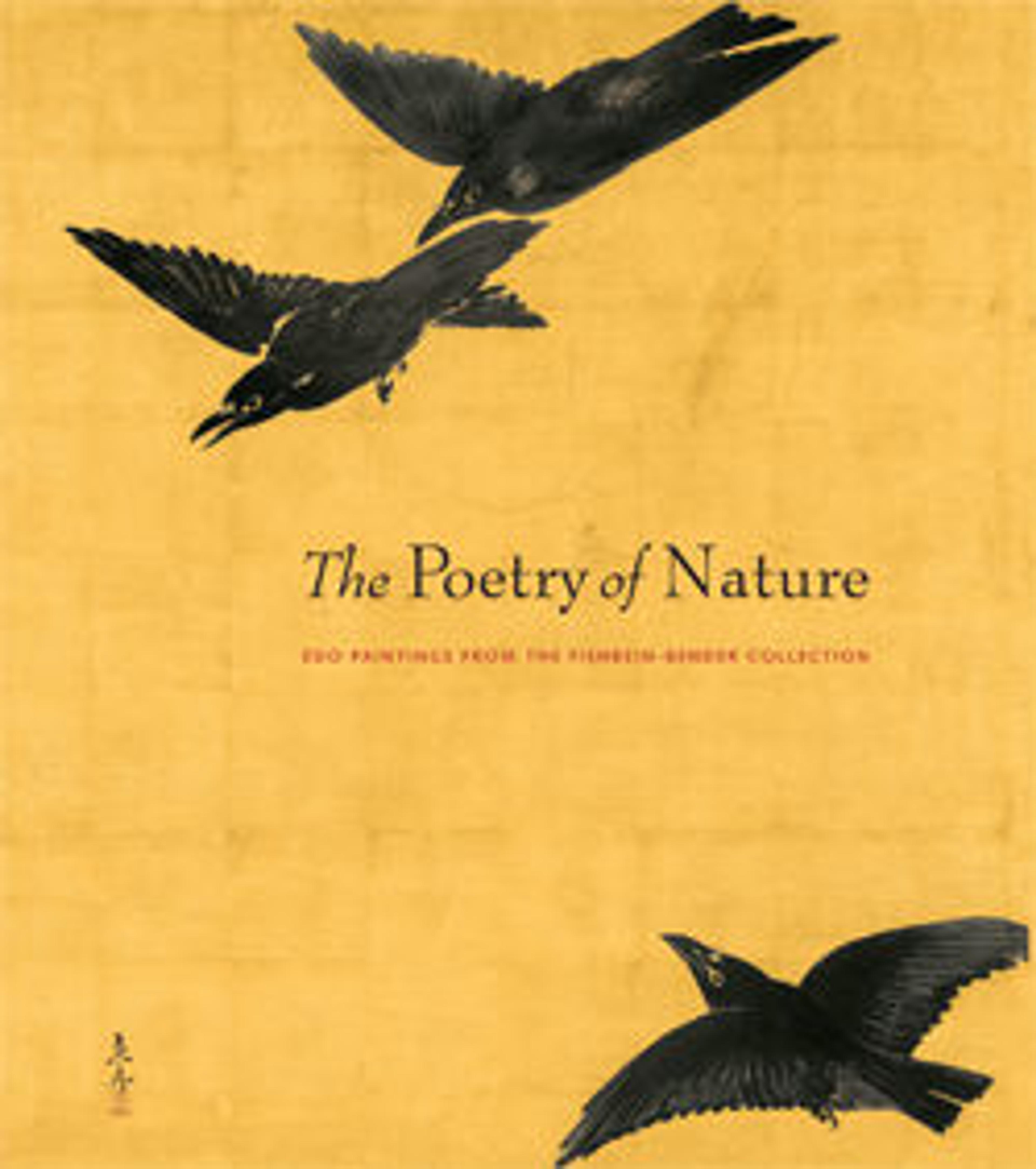Activities of the Twelve Months
This group of eleven scrolls originally belonged to a set of 12 depicting Japanese customs and objects associated with the monthsof the year. Two represent traditional activities: the imperial court ritual of the First Month, known as Shihōhai, in which the Emperor and officials worship the Four Cardinal Directions, and the “Shichi-go-san mairi” celebration in the Eleventh Month for three- and five-year old boys and five- and seven-year old girls. Other paintings depict objects such as the ornamental scented ball, or kusudama, used in festivals of the Fifth Month, and a type of mulberry leaf associated with the Tanabata, or Milky Way, festival in the Seventh Month. The image for the Eighth Month is a classically poetic representation of the autumn season, with foliage—bellflowers, maidenflowers, and knotweed—set against a full moon.
The artist, Sakai Hōitsu, was one of the most important painters of the late Edo-period Rinpa school, although early in his career his paintings reflected training in the Kano-school style, as well as Ukiyo-e. The hanging scrolls in this set were executed in a variety of styles, including the Rinpa mode adopted by Hōitsu around the close of the 1790s, when the work of Ogata Kōrin (1658–1716) first began to dominate his artistic development. Typical of Rinpa style and aesthetic, and visible in the compositions for the Sixth and Eighth Months, is the use of tarashikomi: application of ink or color to the already wet surface of paper or silk, creating a pooled or mottled effect. Rinpa paintings also often contain visual allusions to poetry and other works of literature, as in the image for the Sixth Month, referencing Chapter Four (“Yūgao”) of The Tale of Genji (Genji Monogatari). Thus Hōitsu, who was trained in poetry as well as painting, must have found the art of Kōrin and his circle to be doubly appealing.
The artist, Sakai Hōitsu, was one of the most important painters of the late Edo-period Rinpa school, although early in his career his paintings reflected training in the Kano-school style, as well as Ukiyo-e. The hanging scrolls in this set were executed in a variety of styles, including the Rinpa mode adopted by Hōitsu around the close of the 1790s, when the work of Ogata Kōrin (1658–1716) first began to dominate his artistic development. Typical of Rinpa style and aesthetic, and visible in the compositions for the Sixth and Eighth Months, is the use of tarashikomi: application of ink or color to the already wet surface of paper or silk, creating a pooled or mottled effect. Rinpa paintings also often contain visual allusions to poetry and other works of literature, as in the image for the Sixth Month, referencing Chapter Four (“Yūgao”) of The Tale of Genji (Genji Monogatari). Thus Hōitsu, who was trained in poetry as well as painting, must have found the art of Kōrin and his circle to be doubly appealing.
Artwork Details
- 酒井抱一 「月次絵」
- Title:Activities of the Twelve Months
- Artist:Sakai Hōitsu (Japanese, 1761–1828)
- Period:Edo period (1615–1868)
- Date:late 1790s
- Culture:Japan
- Medium:Eleven hanging scrolls from a set of twelve; ink and color on silk
- Dimensions:Image (each): 24 1/2 × 12 7/16 in. (62.2 × 31.6 cm)
Overall with mounting (each): 56 5/16 × 17 in. (143 × 43.2 cm)
Overall with knobs: 56 5/16 × 19 in. (143 × 48.3 cm) - Classification:Paintings
- Credit Line:Gift of Oni Zazen Collection, 2017
- Object Number:2017.283.1–.11
- Curatorial Department: Asian Art
More Artwork
Research Resources
The Met provides unparalleled resources for research and welcomes an international community of students and scholars. The Met's Open Access API is where creators and researchers can connect to the The Met collection. Open Access data and public domain images are available for unrestricted commercial and noncommercial use without permission or fee.
To request images under copyright and other restrictions, please use this Image Request form.
Feedback
We continue to research and examine historical and cultural context for objects in The Met collection. If you have comments or questions about this object record, please contact us using the form below. The Museum looks forward to receiving your comments.
